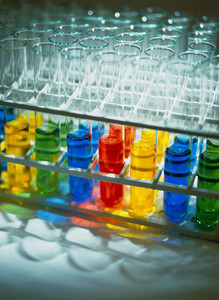Biosimilar development starts with a detailed characterization of the quality profile of the chosen reference product, to establish targets for cell line and process development, according to author Vandekerckhove and colleagues [1]. This characterization requires a careful determination of the range of variability for all relevant product quality attributes of the reference product, as well as an understanding of their relative importance, to ensure appropriate focus on the most important attributes. Following process development, similarity of the biosimilar candidate with the reference product must be demonstrated in comprehensive analytical studies. This first step in the demonstration of biosimilarity provides the most sensitive measurement of differences; and is instrumental in deciding the direction of further product development. Meticulous design of the analytical similarity programme is therefore critical to the success of biosimilar development.
The analytical similarity study design process can be broken down into a number of successive steps. First, all potentially relevant product quality attributes are listed. Sources of consideration for compilation of this list include review of reference product details, such as its known biological functions and interactions, clinical and regulatory history, and other publicly available product information, results from detailed characterization of the reference product, and applicable quality standards for the reference and related products.
Second, one or several analytical methods are mapped against each quality attribute, taking into account factors such as the method’s ability to detect small yet relevant differences between samples, orthogonality to other methods used to interrogate the same attribute, the nature of the data generated by the method, and so forth. Selected methods must be demonstrated as suitable for their intended use. A formal validation study is not required, unless the method is also used for product quality control. Possible interference of sample composition with the method’s performance, if suspected, should be investigated, and if necessary resolved by appropriate sample processing. It should be noted that not all quality attributes are expected to be similar between the biosimilar and the reference. For example, differences in process-related impurities may be acceptable, although they should be controlled within safe limits. The US Food and Drug Administration (FDA) expects sponsors to conduct a risk assessment of differences in process-related impurities.
In a third step, the criticality of each listed attribute is assessed. This assessment requires a determination of the impact a quality attribute has on the clinical performance (pharmacokinetics, pharmacodynamics, efficacy and safety) of the product. Several models can be used for this purpose, although most typically appraise at least the following two dimensions: 1) the relationship between the attribute and the clinical performance, and 2) the strength of the evidence used to determine that relationship. The individual dimensions are scored, either qualitatively or quantitatively, and the sub-scores are integrated to obtain an overall criticality determination. This, in turn, allows to rank the attributes in order of criticality.
In the fourth and final step, which is currently only enforced by FDA, the different analytical test parameters (i.e. the analytical measurements of quality attributes relevant for biosimilarity assessment) are assigned to different tiers, each of which is associated with a specific methodology (and rigour) of data evaluation. Considerations for deciding the appropriate tier include the criticality of the attribute being measured, the nature of the analytical information, relative abundance of the species in question, and the relative importance of the parameter compared to other measurements of the same quality attribute.
Available case history demonstrates that biosimilar sponsors who have successfully registered biosimilar products in regions such as the European Union (EU) and the US are following different variations of the general procedure described above. Upfront discussion of the analytical plan with regulatory agencies prior to execution remains advisable to maximize the probability of success.
Conflict of interest
The authors of the research paper [1] did not provide any conflict of interest statement. However, several of the authors are employees of pharmaceutical companies. For full details of the authors’ conflict of interest, see the research paper [1].
Abstracted by Kristof Vandekerckhove, Senior Director/Principal Scientist, Strategic Drug Development, Design and Delivery Innovation, IQVIA, Vilvoorde, Belgium; and Henriette Kuehne, PhD, Executive Director, Analytical & Pharmaceutical Sciences, Coherus BioSciences, California, USA.
Editor’s comment
Readers interested to learn more about biosimilarity are invited to visit www.gabi-journal.net to view the following manuscripts published in GaBI Journal:
Data requirements to demonstrate biosimilarity in the EU
Demonstrating interchangeability and biosimilarity for US biosimilars
GaBI Journal is indexed in Embase, Scopus, Emerging Sources Citation Index and more.
Readers interested in contributing a research or perspective paper to GaBI Journal – an independent, peer reviewed academic journal – please send us your submission here.
Related articles
Lot selection and handling for biosimilarity
Ranking and evaluation of quality attributes for biosimilarity
Reference
1. Vandekerckhove K, Seidl A, Gutka H, et al. Rational selection, criticality assessment, and tiering of quality attributes and test methods for analytical similarity evaluation of biosimilars. AAPS J. 2018;20(4):68.
Permission granted to reproduce for personal and non-commercial use only. All other reproduction, copy or reprinting of all or part of any ‘Content’ found on this website is strictly prohibited without the prior consent of the publisher. Contact the publisher to obtain permission before redistributing.
Copyright – Unless otherwise stated all contents of this website are © 2018 Pro Pharma Communications International. All Rights Reserved.








 0
0











Post your comment